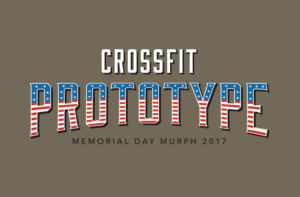
For time:
1 mile Run
*Partition the pull-ups, push-ups, and squats as needed. Start and finish with a mile run. If you’ve got a twenty pound vest or body armor, wear it.
*Timeframe: 30 minutes-60 minutes
No matter how you slice it, this workout is a grind. It’s one of the hardest CrossFit workouts out there but there are several strategies and options that you might want to consider in preparation for this workout. The bulk of the time in this workout will be done completing the pull-ups, push-ups, and air squats. Fortunately, you have the option to partition or split up the reps however you feel necessary. I have personally done “Murph” with several of these different rep schemes on multiple occasions and I have also completed it multiple times unpartitioned (unpartitioned is tough!). Outlined below are a few different ways to complete “Murph” as Rx and the various rep schemes:
20 Rounds (AKA “Cindy) of:
-
- 5 pull ups
- 10 Push Ups
- 15 Air Squats
- Pro’s: Simple to track, easy on transitions
- Con’s: Risk over fatigue and losing time on push ups. Larger volume of sets mentally can be hard.
20 Rounds of:
- 5 Push ups
- 5 Pull ups
- 5 Push ups
-
15 Air Squats
- Pro’s: Improve ability to maintain pace and speed
- Con’s: Harder to track/count and lose some time on transitions. Larger volume of sets mentally can be hard.
20 Rounds of:
- 5 Pull ups
- 5 push ups
- 15 Air Squats
-
5 Push ups
- Pro’s: Improve ability to maintain pace and speed
- Con’s: Harder to track/count and lose some time on transitions. Larger volume of sets mentally can be hard.
10 Rounds of:
- 10 Pull ups
- 20 Push ups
-
30 Air Squats
- Pro’s: Lower amount of sets which is easier mentally, easy to count and track.
- Con’s: Over risk of muscle fatigue and slowing down. You need to have great capacity for this scheme to work well.
Unpartitioned
- 100 Pull ups
- 200 Push ups
-
300 Air Squats
- Pro’s: If you are looking for the hardest variation, this is it.
- Con’s: Everything. It’s so hard, but worth it if you can!
*FloElite has a unique approach to “Murph” with this rep scheme. Give it a look! I personally haven’t tried it but it looks like it could work with the lower volume!
- Breath as much as possible. Do not get in the habit of overstraining and holding your breath, you will only get more fatigued. This tends to happen on pull ups and those last push up reps.
- Do not go to max fatigue on a set. Once you do this, your body is going to take a lot longer to recover for your next set. Get to 70% failure then rest at the most. This is typically applied on the push ups or if you are doing it unpartitioned.
- Shake your arms out during your air squats. This will help you for those pull ups and push ups (if you are partitioning the work).
- Drink water and apply chalk during your air squats (again, only applies to partitioned schemes). Your 15 Air Squats will more than likely take you:15-:30+ to complete, use this time to get a drink, apply chalk or fiddle with your headphones.
- Avoid wasting time on transitions, just keep moving even if it’s at a slower pace on your reps.
- Don’t be afraid to do single pull ups if these will fatigue you too much. Just make sure you use a bar that’s easy to jump up to.
- Do not over pace the 1st mile run. If you try to keep up with the stallions in the group, you will need to play the recovery game once you start on your pull up/push up/air squat scheme.
- If you’re wearing a vest, don’t be afraid to loosen it up a bit when you are running. This may help you breath easier especially if you feel over constricted. Keep it tight when inside so it’s not flopping all over during your pull ups. You need to keep your breathing in check.
- Coming into the second run, set a nice pace and shake your arms out. After all the upper body work you will realize how much you use your arms on your stride. Use this pacing to recover slightly, then press ahead for the final kick.
- Sprint to the finish. Always finish strong and always remember why you are doing it The significance behind this workout (and this goes for all the Hero WODs) goes much deeper than another long grueling workout, this workout is meant to celebrate “Murph” and all of the hero’s that gave their lives. Remember this on the second mile or when you think you should give up, keep pressing ahead you got this!
- Black Band:
*Perform as written; no weight vest
- Orange Band:
*Perform as written; no weight vest; except use a band for pull-ups
- Green Band:
Run 1 Mile or 2000m row
10 Rounds of:
5 Ring Rows
10 Box Push-ups
15 Air Squats
Then,
Run 1 Mile or 2000m row
- White Band:
Run 800m/Row 1000m
10 Rounds of:
5 Ring Rows
10 Incline Push-ups
15 Air Squats or Box Squats
Run 800m/Row 1000m
I hope you found this helpful and always remember, “keep moving.” Murph wouldn’t have wanted it any other way.

